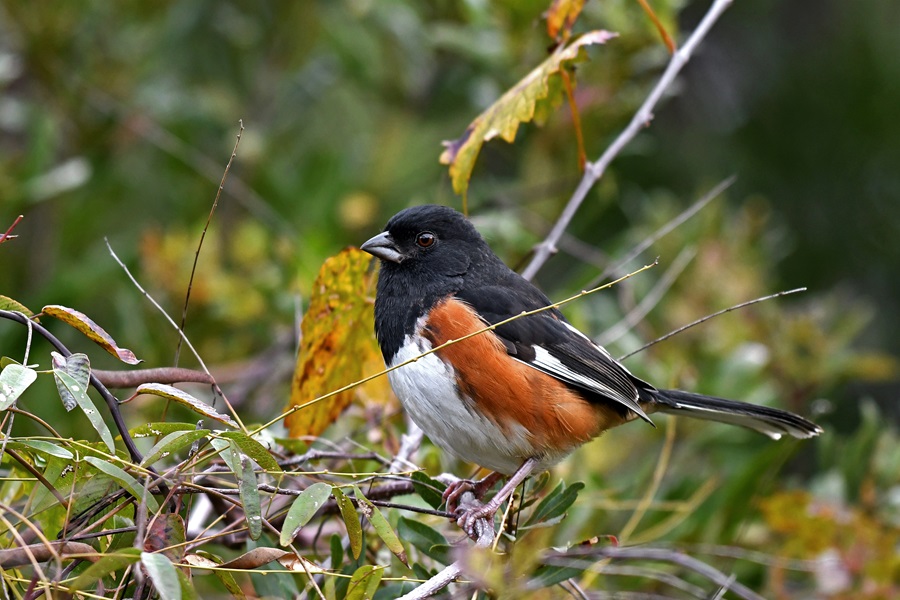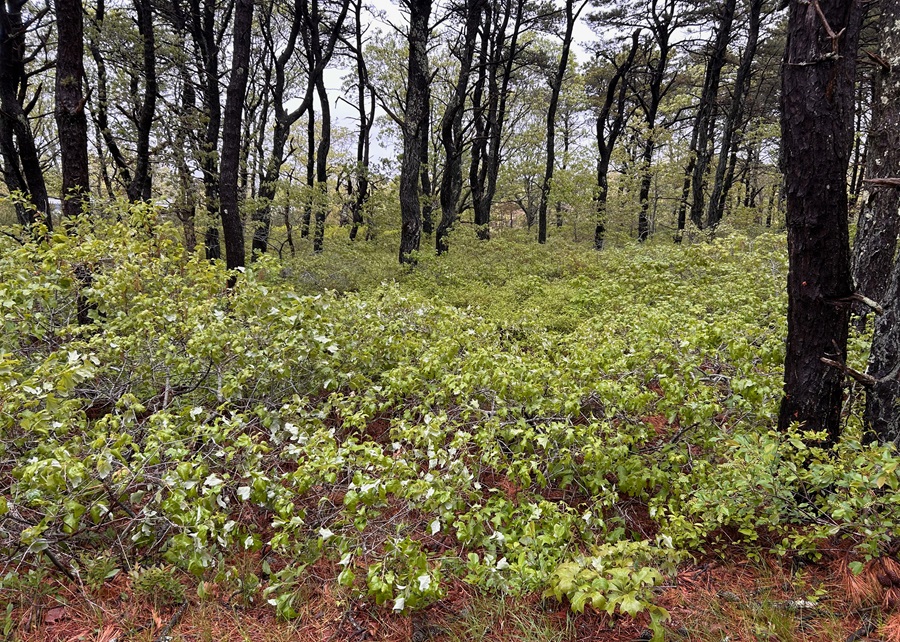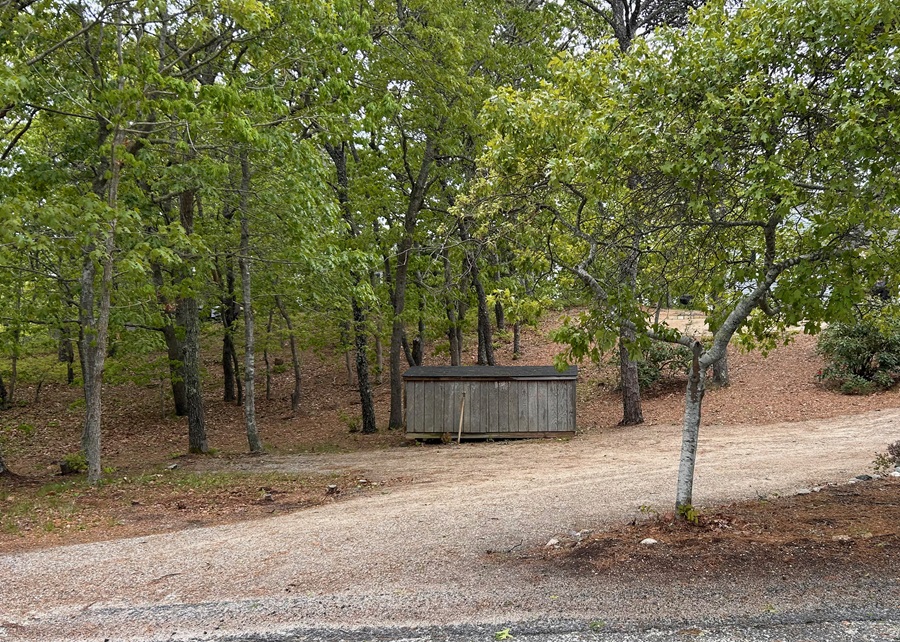I wasn’t sure I’d heard it at first. The rustling might just have been a pine cone dropping into the leaf litter. But another rustling sound made me stop in my tracks. I let my eyes scan the understory. The area, full of scrub oaks and pine trees downed decades ago and mixed with rose bramble, was covered in last year’s leaves and clusters of needles.
There it came again, the rustling. Then a loud two-note call: che-wink. I mimicked the call, and, after a pause, there was a flutter and reveal. The bird came forward and landed on a thin stalk, its gray legs like dried alligator skin. I noted the bold patterning of a male eastern towhee (Pipilo erythrophthalmus): a jet-black head, white breast with light tan on both sides, a red eye. And just as quickly it was gone again, back to the understory and its foraging.

Belonging to the family of New World sparrows, Passerellidae, these birds are decreasing in the Northeast. I have a firm feeling I know why. I have noticed that as land is cleared for housing or settlement of any kind, people often think to leave one or two trees. It’s a nice thought — to leave a memory of what was. But it’s one often thwarted by carelessness. I see so many skid steers tearing through the understory “preserving” the trees, often accidentally scarring the bases of the trunks to a degree that in a year’s time those trees will become diseased and go on the list to be cut down.
I have also noticed a desire to “clean” the forest undergrowth and leave the bare forest floor in view by getting rid of the scraggly scrub oaks and dead branches. “I want to be able to walk through it and look through the trees,” people tell me as we discuss their relationship with the woods around their homes.
What is lost in this notion is the importance of something that balances the forest, a protective layer that provides shade for the ground, habitat for hundreds of moths and beetles, a layer teeming with fruit and shelter. This is the habitat birds such as our eastern towhee depend on.

These birds nest largely on the ground within scrub, often underneath brambles, where they’re protected from foraging coyotes, snakes, and foxes. They are the leaf tossers, the composters, the busy movers of last year’s leaves and remnants of branches brought down by high winds.
In removing box and black huckleberry (Gaylussacia brachycera and Gaylussacia baccata) and low-bush blueberry (Vaccinium angustifolium), we lose spreading groundcovers that offer valuable fruits to many vertebrates, including eastern box turtles and eastern towhees.
I watched the male go back to his two-footed scraping of leaves, gobbling up tiny invertebrates as he went. Despite a stout bill that at first glance resembles that of a seed eater, towhees have a highly insectivorous diet. They love thickets and second growth that often borders older forests. Male towhees do get bold as their gonads swell in late spring. You might hear them singing to defend their territory or see them silhouetted high in a treetop, belting out their piercing whistled song: drink-your-tea. A pause. Perhaps an echo far off. And again: drink-your-tea, the second note the lowest of the three.

The females are so dimorphic that many bird enthusiasts see them and are convinced they’re seeing a different species. They’re all ruddy brown on the back, with no black feathers at all. Females incubate, but both sexes assist in feeding the young. Two broods are common in towhees, and the male will often continue to feed the young from the first brood while the female incubates a second clutch of eggs.
If we want to help keep this species breeding on Cape Cod, we need to resist the temptation to clear the understory between the pine trunks and taller oaks. Nothing can replace that layer once it’s removed. Perhaps a trail can be cut through it to get the sense we seek of looking through the woods while preserving the habitat we cannot replant or regrow in one or even 10 years. That is better than leaving a blister of burnt sod where once there was a thriving grove of blueberry, huckleberry, and briar teeming with fireflies, moths, and towhees.
The towhees are relying on us to educate ourselves to better understand how to steward this fragile landscape we’ve inherited, to heed their call, and drink our tea, so they might continue to sing our forests into existence.



